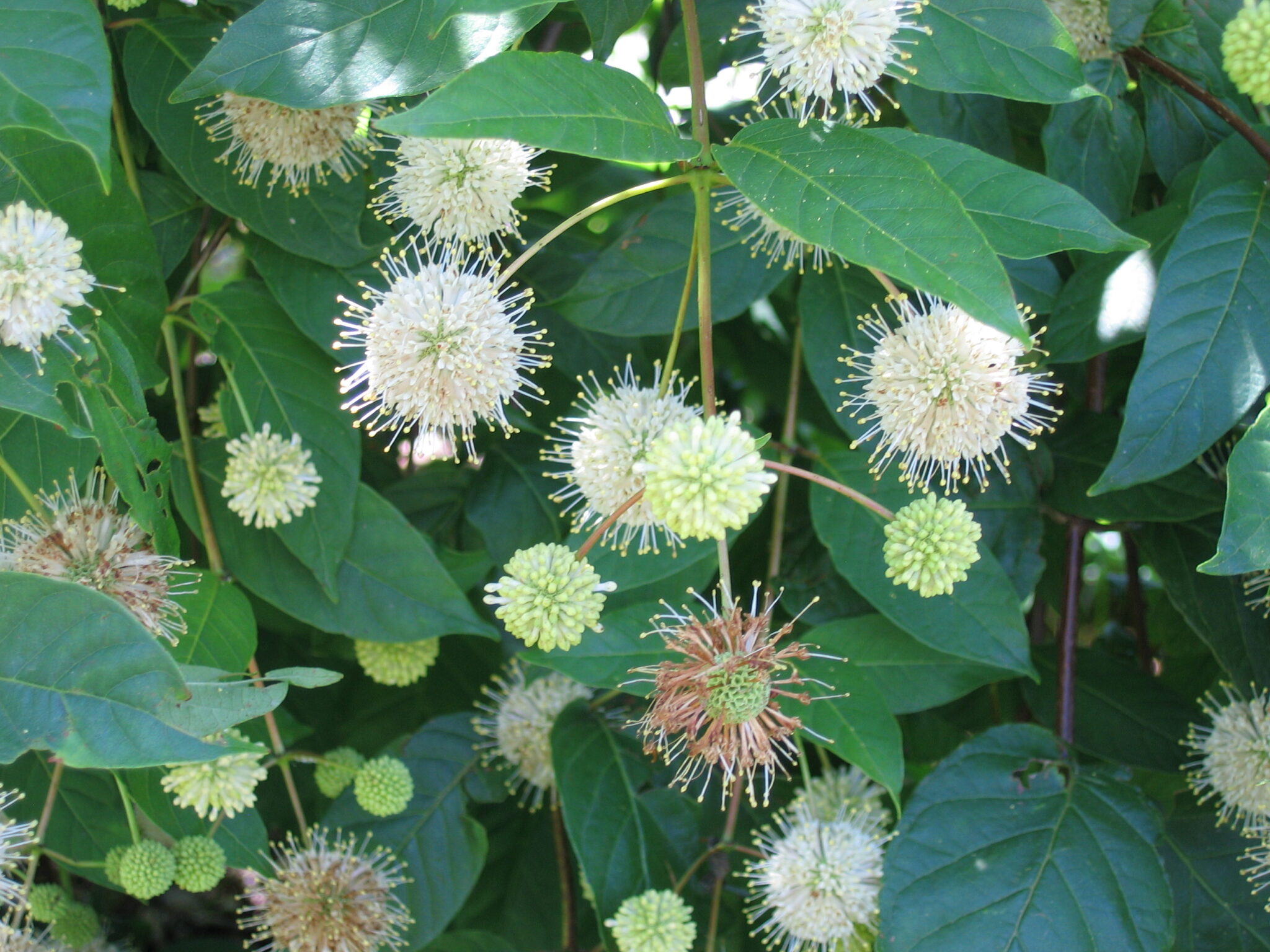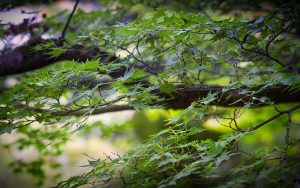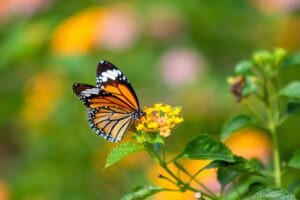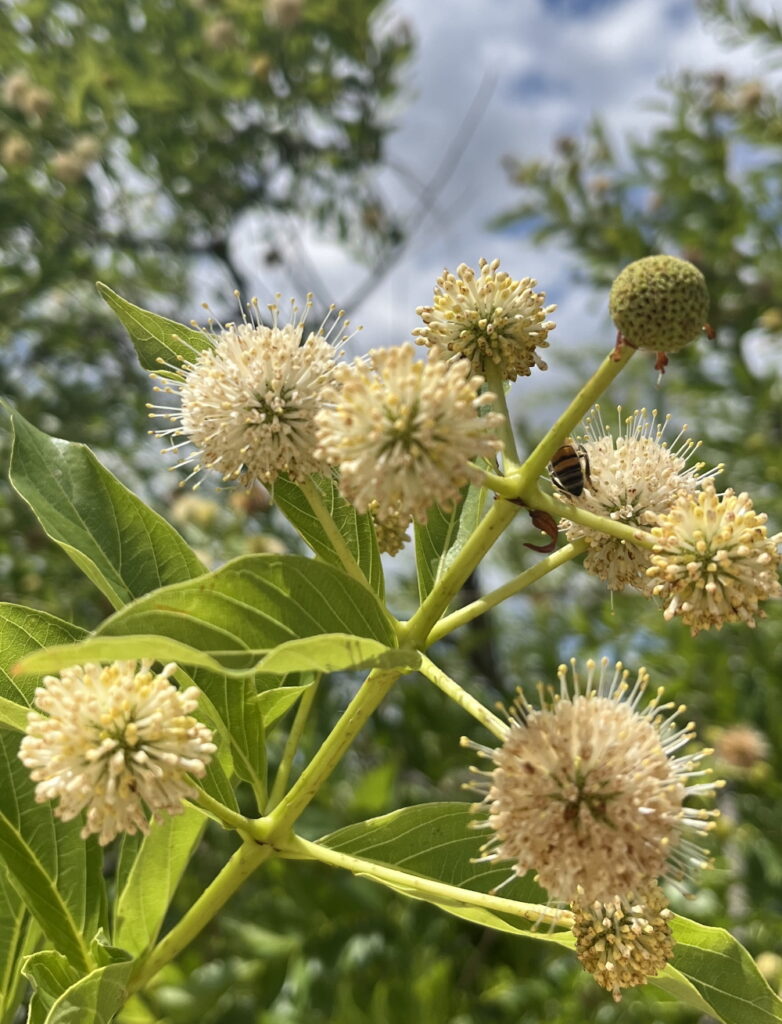
A fascinating shrub is currently in bloom in the Garden, one that Senior Horticulturist Steve Huddleston suggests North Texas gardeners should consider for their landscape: buttonbush.
“This plant will dazzle you with its form, foliage and flowers,” says Huddleston. “And it thrives in locations that many plants find challenging.”
Native to Texas and most of the U.S. in USDA hardiness zones 5-9, the deciduous buttonbush (Cephalanthus occidentalis) grows around swamps, ponds, lakes and streams in full sun or partial shade. It grows well in moist, poorly-drained soil, even soil that is submerged by as much as a foot of water.
“Explore the shorelines of the many lakes in Texas, and you’re bound to find buttonbush growing at the water’s edge where it assumes the shape of a large shrub,” says Huddleston. “Farther up the slope from the water’s edge it takes on the shape of an even larger shrub or small tree.”
Home gardeners interested in buttonbush should look for similar locations. “If you have a low, moist spot in your landscape, buttonbush will certainly thrive there,” says Huddleston.
Buttonbush does well around ponds and other water features. It also makes an ideal plant for swales or retention ponds, both of which capture rainfall and let it soak slowly into the soil as a means of conserving soil moisture and preventing run-off.
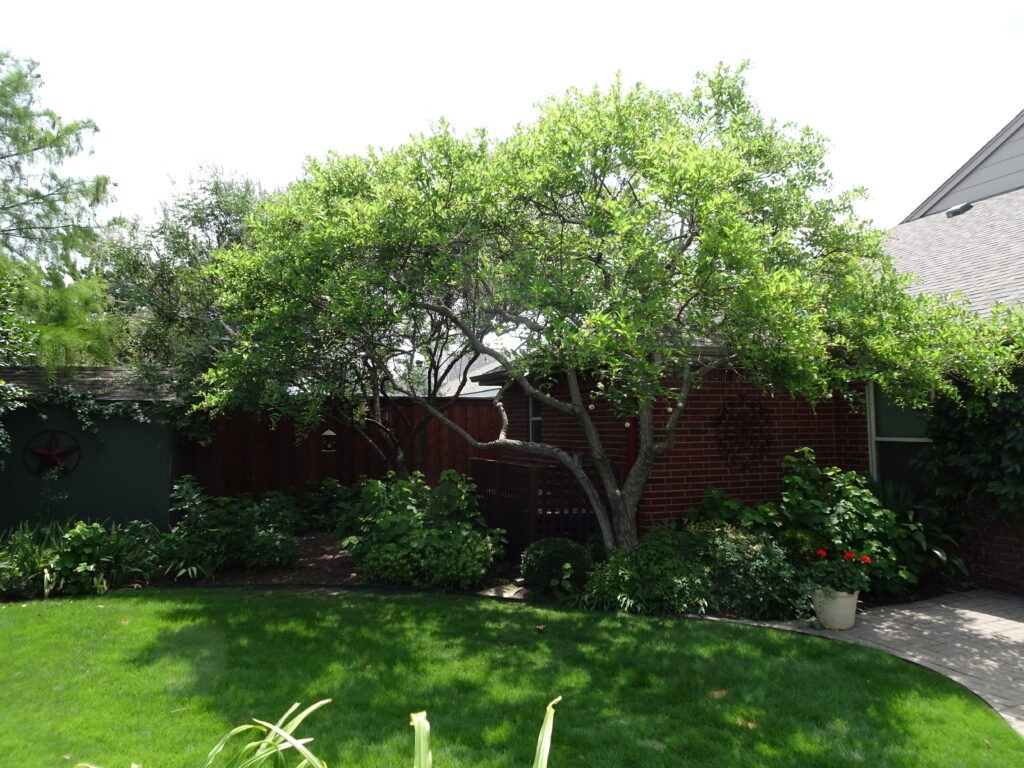
You may occasionally battle a few suckers that come up around the trunk, but you can easily remove these with a pair of pruners. Buttonbush suffers from no serious disease or insect problems, although web worms have been known to create webs in the tree. If that’s the case, simply prune out the affected branch. Buttonbush is moderately resistant to deer.
Buttonbush leafs out in late spring and sports long, narrow leaves up to 8” long that create a lush, green canopy all summer long. In the fall, the leaves turn yellow, then brown, before dropping. Once all the leaves have dropped, the picturesque structure of the twisted trunks and multi-branched, irregular crown really stands out.
The glory of buttonbush is the abundance of exotic white or pale pink flowers that appear in clusters and adorn the tree primarily in June, although the tree may continue to bloom through September. The flowers are 1”-wide globes with protruding pistils that make the floral spheres look like little pincushions. The flowers exude a wonderful, peach-like fragrance reminiscent of mimosa blossoms.
Buttonbush forms a multi-trunked, large shrub or small tree with a rounded growth habit and irregular crown that often consists of crooked and sometimes leaning branches. Buttonbush usually reaches a height of 6’-12’, although it may grow taller in some instances, even up to 20’ tall. If you want to create a tree form of buttonbush, select the strongest, most well-formed trunks to serve as the permanent structure of the tree, and remove those that are weak or superfluous. Over time, the trunks assume a rather twisted, gnarled form that lends much interest to the landscape, especially during the winter when the trunks are fully exposed.
These flowers are full of nectar that attracts bees, butterflies, and hummingbirds. It’s a must for a butterfly garden. Hummingbirds enjoy roosting in the canopy of buttonbush when they’re not busy dining on the flowers’ nectar. At the end of the season, the flowers turn into little brown, button-like balls consisting of multiple, tiny, two-seeded nutlets; these seed balls persist on the tree through the winter. Ducks, other water birds, and shore birds enjoy dining on the seeds. The seeds readily germinate, which means seedlings can appear in beds or turf beneath this tree.
If the species buttonbush (the one found growing in nature) is too large for your landscape, a new cultivar named ‘Sugar Shack’ grows only 3’-4’ tall and 3’-4’ wide. It has the same white, spherical flowers as the species, but the flowers turn into red fruits rather than the brown ones of the species.
“‘Sugar Shack’ is the perfect size buttonbush for today’s small yards and gardens. It favors the same growing conditions as the species and makes a perfect bog plant,” says Huddleston. “Because of its small size, it can also function well in a large container.”
A large buttonbush is blooming right now outside of the BRIT building. Stop by on your next visit and then find a place for buttonbush in your home garden.

